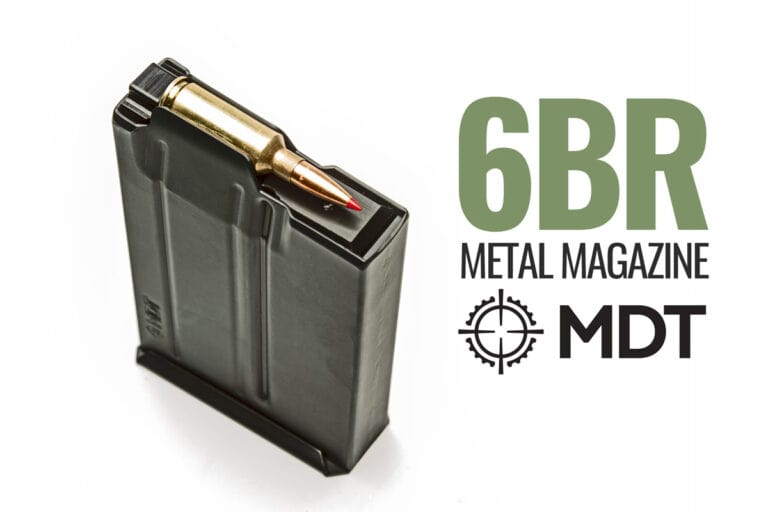PASSION APO Spotting Scope—Compact Power & Exceptional Clarity
German Precision Optics’ Passion APO is a high-performance compact spotting scope designed and…
German Precision Optics’ Passion APO is a high-performance compact spotting scope designed and…
Mesa Tactical, well-known for its pro-grade tactical shotgun accessories, now bridges the gap…
North Kansas City’s TriStar Arms has introduced the APOC, a compact 4-inch-barrel, 9mm…
The Mod-Navy Qual I’ve been doing this qual (or drill, or whatever the current nom…
• Built for road trips and off-road use• Manual transmission equipped• Wrapped in MultiCam Arctic…
I designed the Button Man to give shooters a low-round-count, low-light-engagement drill that involved both…
The ongoing saber-rattling from both sides over Iran’s nuclear weapons research program has focused attention on potential Iranian responses to an attack. Though its options include mobilizing Hezbollah for rocket and other attacks on Israel and using its covert capabilities to mount terrorist attacks elsewhere in the world, the most effective (and feared) response would be a move to close the Strait of Hormuz. Since about 90% of Persian Gulf oil production and roughly 40% of the world’s seaborne oil trade passes through it, the economic implications of even a brief closure are obvious.
Iran has four major methods to shut down tanker traffic through Hormuz: conventional naval capabilities, unconventional naval capabilities (such as suicide speedboats), anti-ship missiles, and mines.
Its conventional naval forces are negligible, amounting to four frigates and three corvettes that all date from the era of the shah (who was deposed in 1979) and are obsolete. It also has three Kilo-class diesel submarines purchased from Russia. Needless to say, this force would represent little more than a brief gunnery and antisubmarine exercise for the U.S. Navy.
Unconventional naval forces, such as a handful of midget submarines, semi-submersible vessels, speedboats, and small missile-armed patrol boats are a slightly more significant but still minor threat. Suicide speedboats, for example, would be incapable of approaching within attack distance of an alert warship (bear in mind that the USS Cole was in a supposedly friendly harbor) and could achieve little damage against a modern double-hulled VLCC (very large crude carrier, or supertanker). The anti-ship missiles represent a greater danger, but the combination of U.S. countermeasures and quick kills of launching vehicles would quickly mitigate it.
As for anti-ship missiles, Iran also has the longer-ranged shore-based HY-2 variant of the Chinese Seersucker. (These missiles are commonly but inaccurately referred to in the media as the Silkworm, but the Seersucker is actually based on the older HY-1 Silkworm.) Many of the launchers are mobile but would doubtless be subject to intensive interdiction in the event of military action.
That leaves the real danger: naval mines. Mines are cheap, easy to employ, hard to find, and the mere threat of their presence is enough to shut down tanker traffic. The issue is not whether a ship can navigate the strait—the issue is whether the owner can get insurance on the ship. If mines were thought to be present, neither Lloyd’s nor any other insurer would write coverage on tankers, and traffic would stop.
Unfortunately, the U.S. Navy recently retired its Osprey-class minesweepers. Its intent was to replace them with the Airborne Mine Countermeasure (AMCM) system mounted on the MH-60S Seahawk, but the AMCM isn’t yet ready for action.
In the interim, the Navy has been purchasing the German-built SeaFox, an unmanned underwater vehicle (UUV). The SeaFox can be deployed from either a surface vessel or a helicopter, to which it is tethered by a fiber optic cable that transmits optical imaging and carries operator commands. The UUV also has homing sonar to identify and locate suspicious objects. Once a mine is identified, the SeaFox operator can detonate a shaped-charge warhead to destroy it. A modified version, the SeaFox COBRA, is effective against floating mines (which are rather old-school, but the Iranians have plenty of them).
So yes, the SeaFox is basically an expendable device—it’s only 1.31 meters long and 43 kg in weight. But it offers an effective means of clearing mines from shipping lanes—including the Strait of Hormuz—should the Iranians decide to prove troublesome.
Guns & Tactics is an online media outlet that focuses on the firearms community, not just firearms and gear but also quality training, technical break downs and enlightening presentations.

Dave talks with Michael from Leupold about the all new Mark 5 HD scope. Leupold
Welcome to the weekly 2A News. Every week, Guns&Tactics wants to give you a recap (with links!) to the shenanigans the gungrabbers are trying to do to take…

The MDT 6mm BR magazine is the one step solution smooth, reliable feeding for the most popular rifle cartridges in precision rifle competitions.

Come see the updated Lionheart REGULUS at SHOT 2022 and learn what they have done to redefine durability and reliability.
[dcs_img_center framed=”no” w=”600″ h=”400″] http://gunsandtactics.wpengine.com/wp-content/uploads/2013/04/oht-600-400.jpg [/dcs_img_center] [dcs_post_top] [dcs_fancy_header color=”#000000″ fweight=”bold”]One of the most used tools I own, the one-hand-operable multi-tool has served me well both in the field…

Our take on the Atlas Athena from Atlas Gunworks. A high performance, straight out of the box competition super car of a gun.
© 2025 UN12 Magazine
© 2025 UN12 Magazine
Wait! Don’t forget to